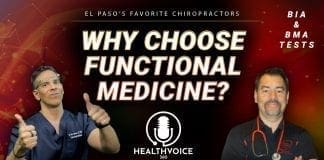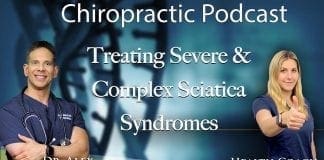Individuals can become overly passionate about exercising. However, constantly training the body without taking enough time to rest and recover can impact athletes and fitness enthusiasts physically and mentally and lead to overtraining syndrome. Excessive training can cause decreases in athletic physical performance that can be long-lasting, sometimes taking several weeks or months to recover. Individuals who don’t learn to manage overtraining can have injuries and more frequent illnesses and infections. And the psychological effects can also lead to negative mood changes. Learn the signs and how to cut back to prevent injury and/or burnout.

Table of Contents
Overtraining Syndrome
Athletes and fitness lovers often exercise longer and harder than average to reach peak performance. Even individuals just getting started with exercise can push their limits as they try to figure out what works for them. This means taking into consideration the following:
- The mental side of training.
- How to get and stay motivated.
- How to set up a safe and effective program with balanced cardio and strength training.
- How to avoid skipping workouts when things get in the way.
- Exercising too much is a mistake many beginners make, putting themselves at risk for injury.
Overtraining syndrome is when the body goes through and feels:
- Extreme fatigue.
- Physical performance problems.
- Mood changes.
- Sleep disturbances.
- Other issues due to working out or training too much and/or too hard without giving the body enough time to rest.
Overtraining is common among athletes who train beyond their body’s ability to recover, usually when preparing for a competition or event. Conditioning for athletes and enthusiasts requires a balance between work and recovery.
Signs and Symptoms
There are several signs to look for, with the more common symptoms being:
- Mild muscle or joint soreness, general aches, and pains.
- Decreased training capacity, intensity, or performance.
- Lack of energy, constantly tired, and/or drained.
- Brain fog.
- Insomnia.
- Decreased appetite or weight loss.
- Loss of enthusiasm for the sport or exercise.
- Irregular heart rate or heart rhythm.
- Increased injuries.
- Increased headaches.
- Feeling depressed, anxious, or irritable.
- Sexual dysfunction or decreased sex drive.
- Lower immunity with an increase in colds and sore throats.
Prevent Overtraining
- Predicting whether there is a risk of overtraining can be tricky because every person responds differently to various training routines.
- Individuals have to vary their training throughout and schedule adequate time for rest.
- Individuals who believe they may be training too hard should try the following strategies to prevent overtraining syndrome.
Take Note of Mental and Mood Changes
Methods exist to test for overtraining objectively.
- One is taking note of psychological signs and symptoms associated with changes in an individual’s mental state can be an indicator.
- Decreased positive feelings for exercise, physical activities, and sports.
- Increased negative emotions, like depression, anger, fatigue, and irritability, can appear after a few days of intense training.
- If these feelings and emotions begin to present, it is time to rest or dial the intensity down.
Training Log
- A training log that notes how the body feels daily.
- It can help individuals notice downward trends and decreased enthusiasm.
- This can help individuals learn to listen to their body’s signals and rest when necessary.
Monitor Heart Rate
- Another option is to track changes in heart rate over time.
- Monitor heart rate at rest and specific exercise intensities while training, and record it.
- If the heart rate increases at rest or a given intensity, this could be a risk indicator, especially if symptoms develop.
- Track resting heart rate each morning.
- Individuals can manually take a pulse for 60 seconds immediately after waking up.
- Individuals can also use a heart rate monitor or fitness band.
- Any marked increase from the norm may indicate that the body has not fully recovered.
Treatment
Rest and Recovery
- Reduce or stop the exercise and allow the mind and body a few rest days.
- Research on overtraining shows that complete rest is the primary treatment.
Take Extra Rest Days
- Starting anything new will usually make the body sore.
- Be prepared for the aches and take extra rest days when needed.
- The body won’t have the same energy levels from day to day or even from week to week.
Consult A Trainer
- Not sure where to start or how to approach working out safely.
- This is the time to meet with a professional who can look at physical and medical history, fitness level, and goals.
- They can develop a customized program to meet specific needs.
Nutrition and Hydration
- Maintain optimal body hydration with plenty of H2O/water and rehydrating drinks, vegetables, and fruits.
- Staying properly hydrated is key to both recovery and prevention.
- Getting enough protein and carbohydrates supports muscle recovery.
- Carbs are important for endurance, and protein is important for muscular strength and power.
Sports Chiropractic Massage
- Research shows that sports massage benefits muscle recovery and can improve delayed onset muscle soreness/DOMS.
- Massage keeps muscles loose and flexible and increases blood circulation for expedited recovery.
Relaxation Techniques
- Stress-reduction techniques such as deep breathing and progressive muscle relaxation exercises can improve rest and recovery.
Total recovery from overtraining syndrome can take a few weeks or longer, depending on the individual’s health status and how long the excessive training has gone on. A physician can refer individuals to a physical therapist or sports chiropractor, who can develop a personalized recovery plan to get the body back to top form.
Military Training and Chiropractic
References
Bell, G W. “Aquatic sports massage therapy.” Clinics in sports medicine vol. 18,2 (1999): 427-35, ix. doi:10.1016/s0278-5919(05)70156-3
Carrard, Justin, et al. “Diagnosing Overtraining Syndrome: A Scoping Review.” Sports Health vol. 14,5 (2022): 665-673. doi:10.1177/19417381211044739
Davis, Holly Louisa, et al. “Effect of sports massage on performance and recovery: a systematic review and meta-analysis.” BMJ open sport & exercise medicine vol. 6,1 e000614. 7 May. 2020, doi:10.1136/bmjsem-2019-000614
Grandou, Clementine, et al. “Symptoms of Overtraining in Resistance Exercise: International Cross-Sectional Survey.” International Journal of sports physiology and Performance vol. 16,1 (2021): 80-89. doi:10.1123/ijspp.2019-0825
Meeusen, Romain, et al. “Brain neurotransmitters in fatigue and overtraining.” Applied physiology, nutrition, and metabolism = Physiologie applique, nutrition et metabolisme vol. 32,5 (2007): 857-64. doi:10.1139/H07-080
Peluso, Marco Aurélio Monteiro, and Laura Helena Silveira Guerra de Andrade. “Physical activity and mental health: the association between exercise and mood.” Clinics (Sao Paulo, Brazil) vol. 60,1 (2005): 61-70. doi:10.1590/s1807-59322005000100012
Weerapong, Pornratshanee, et al. “The mechanisms of massage and effects on performance, muscle recovery, and injury prevention.” Sports medicine (Auckland, N.Z.) vol. 35,3 (2005): 235-56. doi:10.2165/00007256-200535030-00004
Professional Scope of Practice *
The information herein on "Overtraining Syndrome: EP Functional Health Clinic" is not intended to replace a one-on-one relationship with a qualified health care professional or licensed physician and is not medical advice. We encourage you to make healthcare decisions based on your research and partnership with a qualified healthcare professional.
Blog Information & Scope Discussions
Our information scope is limited to Chiropractic, musculoskeletal, physical medicines, wellness, contributing etiological viscerosomatic disturbances within clinical presentations, associated somatovisceral reflex clinical dynamics, subluxation complexes, sensitive health issues, and/or functional medicine articles, topics, and discussions.
We provide and present clinical collaboration with specialists from various disciplines. Each specialist is governed by their professional scope of practice and their jurisdiction of licensure. We use functional health & wellness protocols to treat and support care for the injuries or disorders of the musculoskeletal system.
Our videos, posts, topics, subjects, and insights cover clinical matters, issues, and topics that relate to and directly or indirectly support our clinical scope of practice.*
Our office has reasonably attempted to provide supportive citations and has identified the relevant research study or studies supporting our posts. We provide copies of supporting research studies available to regulatory boards and the public upon request.
We understand that we cover matters that require an additional explanation of how it may assist in a particular care plan or treatment protocol; therefore, to further discuss the subject matter above, please feel free to ask Dr. Alex Jimenez, DC, or contact us at 915-850-0900.
We are here to help you and your family.
Blessings
Dr. Alex Jimenez DC, MSACP, RN*, CCST, IFMCP*, CIFM*, ATN*
email: coach@elpasofunctionalmedicine.com
Licensed as a Doctor of Chiropractic (DC) in Texas & New Mexico*
Texas DC License # TX5807, New Mexico DC License # NM-DC2182
Licensed as a Registered Nurse (RN*) in Florida
Florida License RN License # RN9617241 (Control No. 3558029)
Compact Status: Multi-State License: Authorized to Practice in 40 States*
Presently Matriculated: ICHS: MSN* FNP (Family Nurse Practitioner Program)
Dr. Alex Jimenez DC, MSACP, RN* CIFM*, IFMCP*, ATN*, CCST
My Digital Business Card














